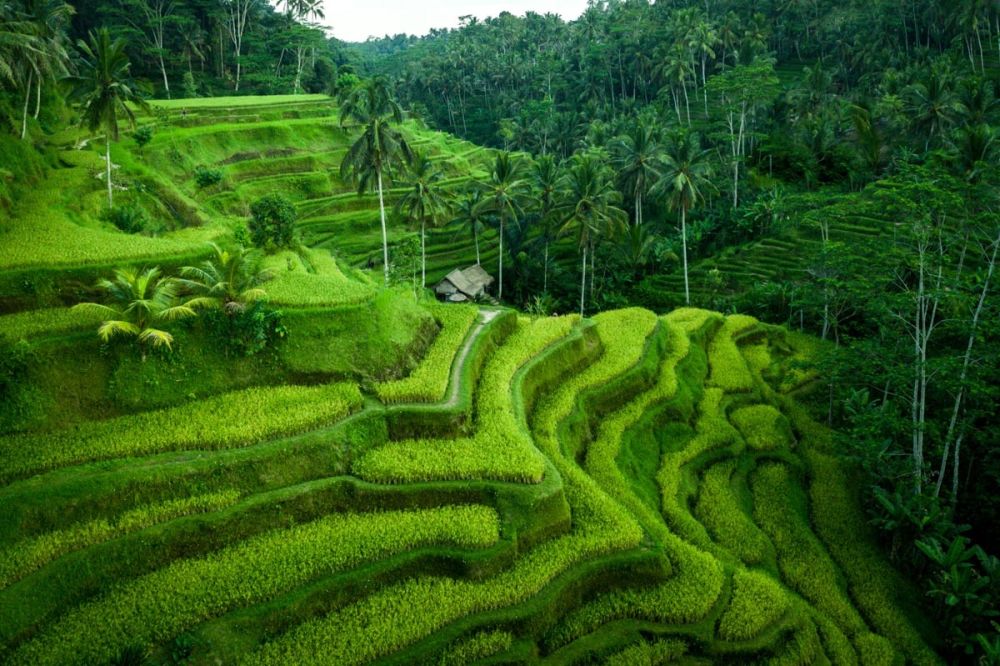

The Tegallalang Rice Terraces in Bali, Indonesia, represent not only a crucial aspect of the island's agriculture but also a significant part of its attraction as a global tourism destination. Known for their vivid green landscapes and innovative irrigation system known as subak, the terraces are a reflection of Bali's centuries-old relationship with rice cultivation.
The history of rice terraces in Bali dates back to the 9th century and is tied to the cultural belief in the importance of balancing the spiritual and natural world. The Tegallalang Rice Terraces are one of the most splendid examples of this philosophy brought to life through agriculture. The subak system, recognized by UNESCO as a World Heritage site, is a traditional method of water management that was developed in Bali around the same time.
Tourism in Bali began in the early 20th century, with artists and intellectuals from the West being drawn to the island's culture and landscapes. However, it wasn't until the 1970s and 1980s that Bali saw a real boom in tourism. As Bali grew in popularity, so too did the interest in its intricate rice fields. Tegallalang, specifically, gained notoriety for its stunning terraces which offer a picturesque panorama that is ideal for photography.
Over the years, the rice terraces have become an icon of Bali tourism. Local authorities and residents have developed various viewpoints and attractions within the terraces to cater to the influx of visitors seeking the ultimate Balinese experience.
In recent years, Tegallalang has adapted to changes in tourist behavior. Visitors are increasingly looking for authentic and sustainable travel experiences. This has led to the rise of eco-friendly tours and activities that promote understanding and respect for local agriculture and culture. There is also a trend towards incorporating wellness and holistic elements into visits to the rice terraces, with yoga and meditation sessions often taking place amidst the serene backdrop of the cascading fields.
Another trend is the digital transformation of the tourism experience. Many visitors come to Tegallalang Rice Terraces seeking the perfect social media picture. The local community has embraced this by creating numerous photogenic spots and experiences that allow tourists to capture and share their memories instantly online.
When planning a visit to the Tegallalang Rice Terraces, travelers should consider the best times to visit for optimal experiences. The early morning hours just after sunrise or late afternoon are ideal for avoiding the heat and the crowds. Visitors are encouraged to respect the local environment and contribute to the preservation of this magnificent site.
The Tegallalang Rice Terraces continue to be a testament to Bali's living cultural landscape and its evolving tourism industry. Through maintaining the delicate balance of cultural heritage and tourism needs, Tegallalang remains a treasured destination for travelers around the world.